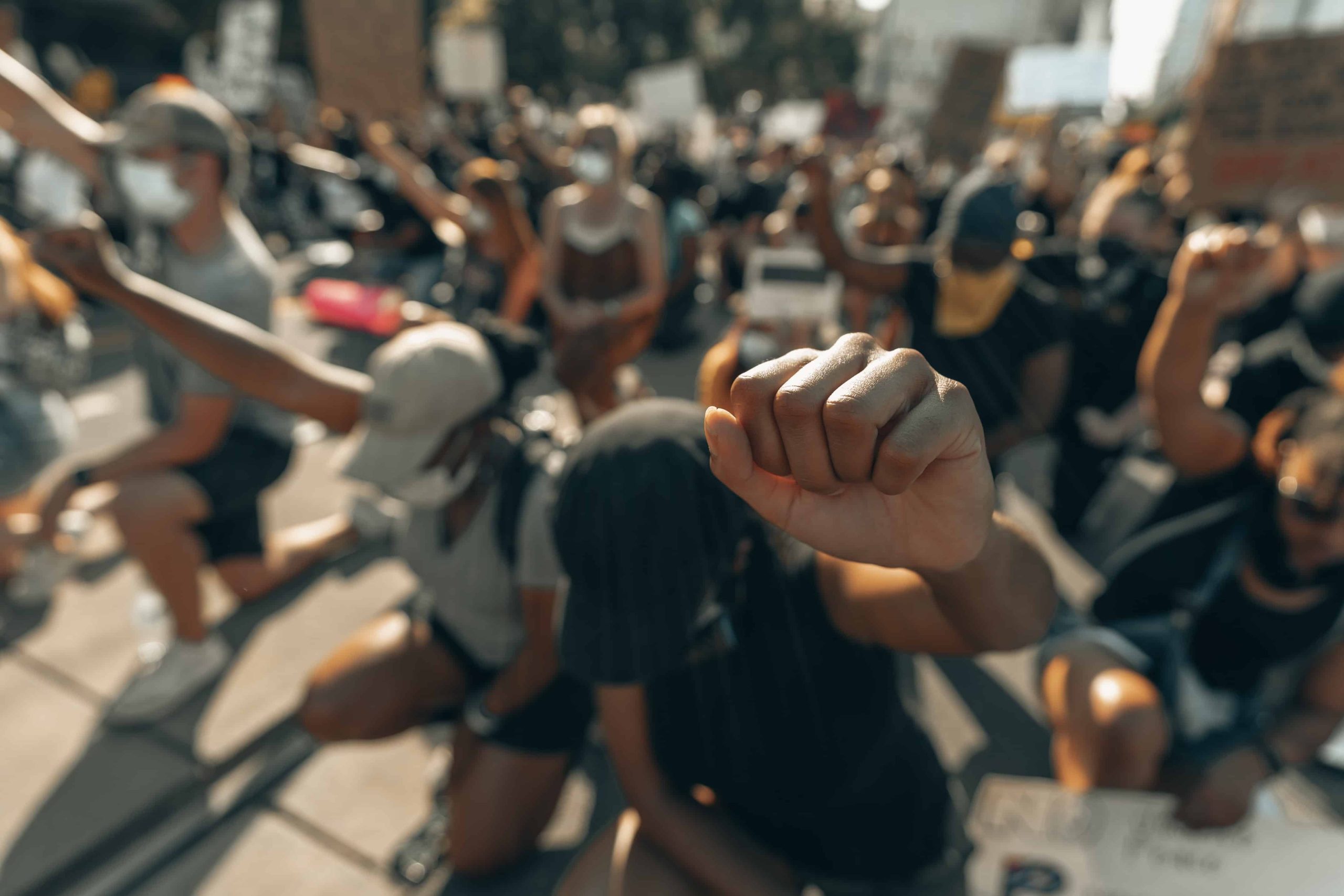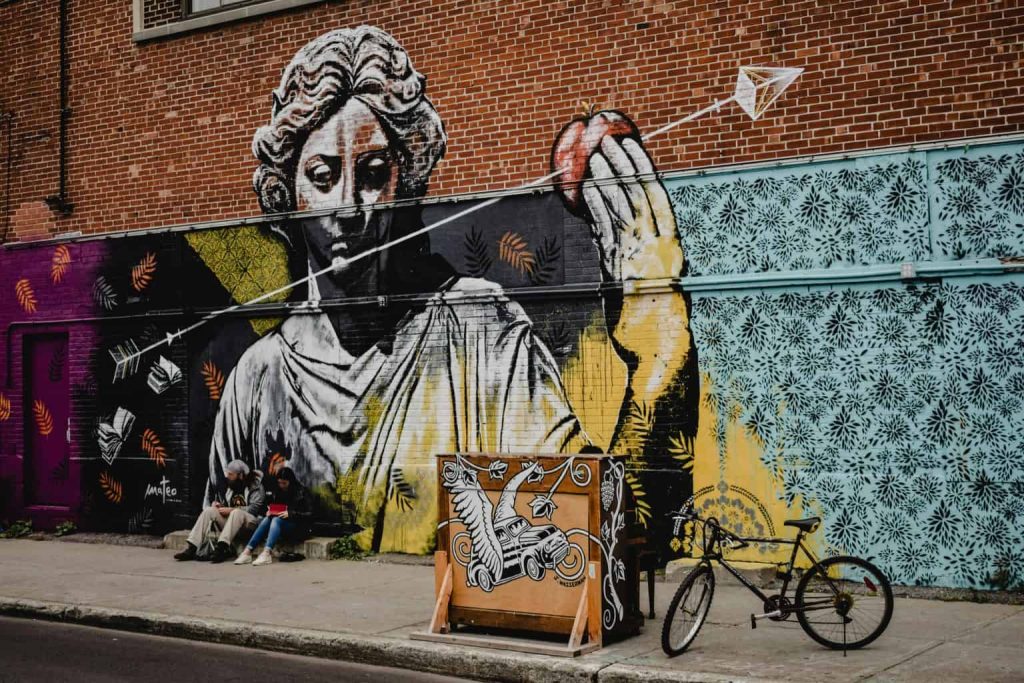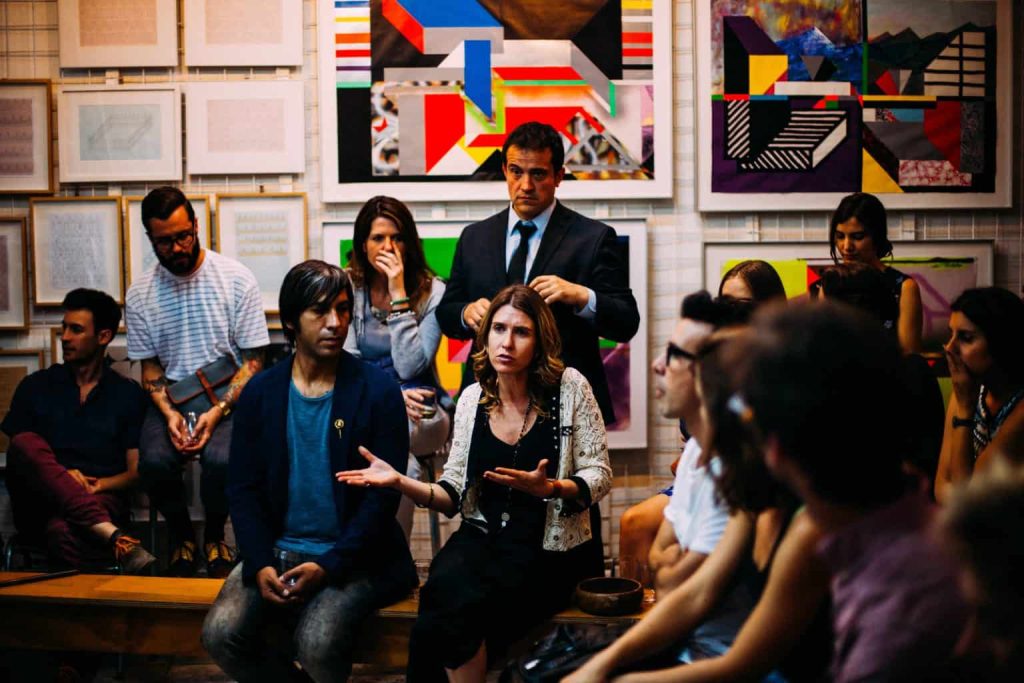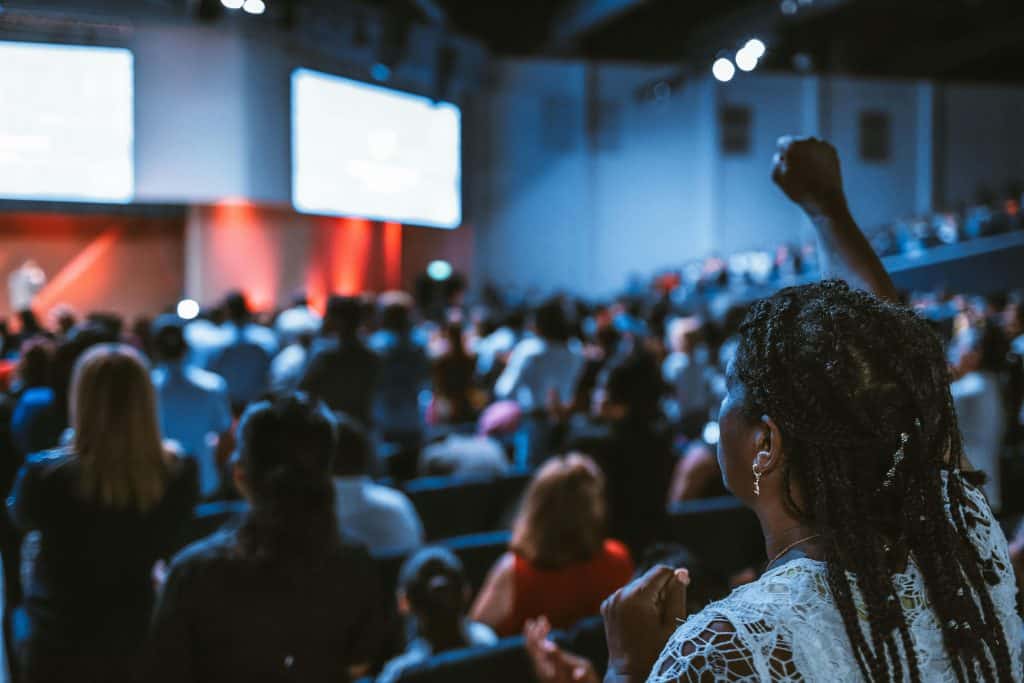
30 Jan Art as a Tool for Social Change
Art, in its various forms, is a testament to the limitless facets of human creativity and emotion. Beyond its aesthetic allure, art serves as a potent communicator, forging connections that surpass cultural and geographical boundaries. Whether expressed on canvas, through music, or on the stage, these creative endeavors delve into the complexities of the human experience. The emphasis is on how art might act as a catalyst for societal change. This article takes us beyond traditional galleries to reveal how creative expressions can be effective instruments for questioning social conventions, bringing attention to issues, and motivating people to take action. We explore the special synthesis of creativity with reality, looking at how the emotional and intellectual influence of art reveals social challenges and contributes to a collective consciousness that may lead to significant changes in the fabric of human existence.
The Power of Art for Social Change

Photo by Eva Bronzini
Bypassing Logic and Intellect
Art’s profound impact often lies in its ability to transcend the rational confines of logic and intellect, delving directly into the realm of emotions. Its expressive nature serves as a conduit for evoking deep and nuanced feelings, allowing for a more profound understanding of intricate social issues. By engaging on an emotional level, it has the unique power to bypass cognitive biases that may hinder objective analysis. This emotional engagement prompts individuals to explore matters with greater depth and sincerity, providing a holistic perspective that goes beyond what a purely analytical approach might offer. Art’s capacity to navigate the subjective landscape of emotions enables it to weave narratives that connect on a human level, fostering a more intimate and empathetic exploration of the complexities within society.
At the core of art’s influence is its ability to establish emotional resonance, creating a visceral connection between the audience and the subject matter. Whether conveyed through visual imagery, the rhythm of music, or the narrative arcs of storytelling, art possesses a unique power to elicit empathy and compassion. This emotional resonance serves as a potent tool for drawing attention to pressing social issues, as it transcends cultural and societal boundaries, resonating universally. Through shared emotional experiences, art facilitates the emergence of a collective understanding and shared humanity, bridging gaps and fostering a sense of interconnectedness. In this way, art becomes a dynamic force capable of inspiring change by tapping into the profound well of human emotions and creating a shared emotional space for contemplating and addressing societal challenges.
Challenging Perceptions and Narratives
By presenting opposing views that encourage reflection and critical analysis, art plays an important role in subverting popular beliefs and social narratives. Artistic expression becomes a means of provoking viewers to reevaluate conventional wisdom and hierarchies of power through its ability to challenge the status quo. Artistic expression, with its critical viewpoint, encourages people to challenge deeply rooted cognitive patterns and catalyzes a deeper level of intellectual engagement. Art generates a dynamic atmosphere where varied ideas may coexist by questioning preconceived beliefs, promoting a more inclusive and open-minded public discourse that celebrates the diversity of the human experience. Art serves as a powerful platform for amplifying the voices of marginalized communities, providing an avenue for their stories and perspectives to be heard and seen. By showcasing the narratives of those who have been historically underrepresented, art contributes significantly to the broader goal of achieving visibility and recognition for diverse voices. This visibility is crucial in challenging dominant narratives that may perpetuate stereotypes or marginalize certain groups. By giving voice to the experiences of the marginalized, art becomes an agent of social change, promoting empathy and understanding while actively working towards a more inclusive representation of human experiences in the collective consciousness.
Inspiring Action and Mobilization
Art possesses a unique ability to transcend its role as a passive form of expression and evolve into a powerful catalyst for social change. Through compelling messages and poignant calls to action, it stimulates a profound sense of urgency and purpose. By tapping into the emotive core of individuals, art motivates them to move beyond mere observation and take direct action in addressing pressing social issues. The evocative power of art transforms passive observers into impassioned agents of change, instigating a ripple effect of activism that extends beyond the confines of galleries and stages, reaching into the hearts of communities. The shared experience of engaging with art forms a strong foundation for community building around social causes. As individuals collectively immerse themselves in artistic expressions that resonate with shared values and concerns, a sense of solidarity emerges. Art becomes a unifying force, breaking down barriers and fostering connections among diverse individuals who find common ground in their shared experiences. These connections, forged through the shared appreciation of art, lay the groundwork for building coalitions dedicated to advocating for social change. Art becomes a dynamic catalyst for bringing people together, encouraging collaboration, and mobilizing communities toward a common purpose, ultimately reinforcing the transformative potential of collective action in the pursuit of positive societal transformation.
Key Takeaways
- Art, in its diverse forms, serves as a profound means of expressing human creativity and emotion, transcending boundaries to address the core of the human experience.
- Art possesses a unique ability to tap into empathy, bypassing cognitive biases and fostering more profound engagement with social issues through powerful emotional connections.
- Through storytelling, characters, and imagery, art establishes personal connections, making complex social issues relatable and enhancing understanding.
- Art challenges societal norms and power structures by offering alternative viewpoints, encouraging audiences to question accepted narratives and fostering a critical perspective.
- By providing visibility to underrepresented perspectives, art becomes a powerful tool for giving a voice to marginalized communities, creating a more inclusive narrative.
- Art directly inspires activism and social action by issuing powerful calls to engagement, motivating individuals to translate emotional connections into tangible efforts for change.
- Shared experiences of art foster solidarity, building coalitions around social causes and creating a sense of community united by a common understanding and purpose.
Effective Strategies for Social Impact through Art

Photo by Antenna
Choosing the Right Medium
When it comes to selecting the appropriate medium for conveying a message, several considerations come into play. First and foremost, the accessibility and reach of the chosen medium must be carefully evaluated. Tailoring the message to resonate across various art forms, such as visual arts, music, and performance, is essential. This approach ensures that the message not only reaches a broad audience but also has a meaningful impact on individuals. The choice of medium plays a pivotal role in capturing attention and fostering a deeper connection with the audience, thereby enhancing the overall effectiveness of the communication.
Collaboration and Partnership
Collaboration and cooperation are essential components of success in the field of social impact. One very important component that sticks out is community collaboration. By collaborating with impacted groups, authenticity is ensured, ensuring that the message is sensitive to cultural differences and still relevant today. This cooperative strategy promotes a sense of shared responsibility while also strengthening the social impact initiative’s credibility. Establishing strategic alliances with groups, media, and activists is also essential. These collaborations increase the social message’s total impact and reach, having a longer-lasting and more pervasive influence on the intended audience. The ability to successfully solve social challenges is greatly strengthened by the synergy of coordinated efforts.
Effective Storytelling and Messaging
The art of storytelling is a potent tool within the realm of social impact initiatives. Clarity and focus in conveying the message are paramount. Clearly defining the social issue and articulating the desired outcome helps prevent misinterpretation and ensures that the audience understands the purpose of the initiative. Crafting a compelling narrative with emotional impact is equally essential. This involves using powerful imagery, narratives, and symbols to evoke empathy and action. Effective storytelling not only communicates the message but also inspires and motivates individuals to engage with and contribute to the cause. By tapping into the emotional resonance of the audience, storytelling becomes a catalyst for meaningful change, making individuals more likely to connect with the social issue on a personal level and take positive actions.

Photo by Luis Quintero
Conclusion
In the canvas of societal evolution, art emerges not only as an expression of human creativity but as a transformative force, a tool for social change. As we have explored the profound impact of artistic expression on raising awareness and inspiring action, it becomes evident that art possesses the unique ability to bypass logic and intellect, tapping into the wellspring of human emotion. Through emotional resonance, personal connections, and the challenging of established narratives, art creates a powerful platform for critical perspective and dialogue. Its role in social change is not limited to mere observation; it extends to active participation and mobilization. By issuing calls to action and fostering community building, art serves as a catalyst for activism, unifying diverse voices around shared experiences. The effective strategies outlined, from choosing the right medium to embracing collaboration and strategic storytelling, underscore the importance of thoughtful and intentional approaches in leveraging art for social impact. Art stands as a beacon in the complex landscape of social change, illuminating paths toward understanding, empathy, and change. It is a dynamic force that not only reflects the challenges of the present but also shapes the possibilities of the future. Through its ability to amplify voices, challenge norms, and inspire collective action, art continues to be a transformative agent across generations, contributing to the ongoing narrative of societal progress. In the hands of artists and advocates alike, the brushstrokes of change are painted, and the symphony of a better tomorrow is composed—one masterpiece at a time.
FAQs
Can any form of art be effective for social change?
Certainly, any form of art has the potential to be effective for social change, with its impact contingent on the target audience and the chosen medium’s capacity to resonate with and engage them. Whether it be visual arts, literature, music, or performance, the key lies in the ability to convey a message that sparks contemplation and, ideally, prompts action. The effectiveness of art in inciting social change often stems from its power to elicit emotional responses and challenge established perspectives.
How can art address long-term social issues?
Addressing long-term social issues through art involves a commitment to consistent efforts. Art can play a pivotal role by persistently raising awareness, challenging societal norms and perceptions, and inspiring sustained activism. The longevity of the impact relies on the ability of the artwork to embed itself into the collective consciousness, fostering an enduring dialogue that transcends immediate reactions.
Is collaboration necessary for impactful art and social change?
Collaboration emerges as a crucial factor in creating impactful art for social change. By bringing together diverse talents and perspectives, collaboration enhances authenticity and relevance. This collective approach allows for a more profound impact, as it ensures that the artwork reflects the complexity of the issues it seeks to address. Multiple voices contribute to a richer narrative that resonates with a broader audience, fostering a sense of shared responsibility and connection.
What ethical considerations should artists keep in mind?
When engaging in art for social change, ethical considerations should guide the artist’s choices. Avoiding tokenism, which can reduce the authenticity of the message, is paramount. Artists should ensure respectful representation, acknowledging the nuances and diversity within the communities they depict. Additionally, they must consider the potential impact of their work on the very communities they aim to support, being mindful of unintended consequences and striving for positive, empowering outcomes. Ethical awareness ensures that the transformative power of art is harnessed responsibly and inclusively.
Discover the “Collaborative Art Events for Promotion” and learn about the organizational nuances that support creative synergy and elevate the voice of the artistic community.

